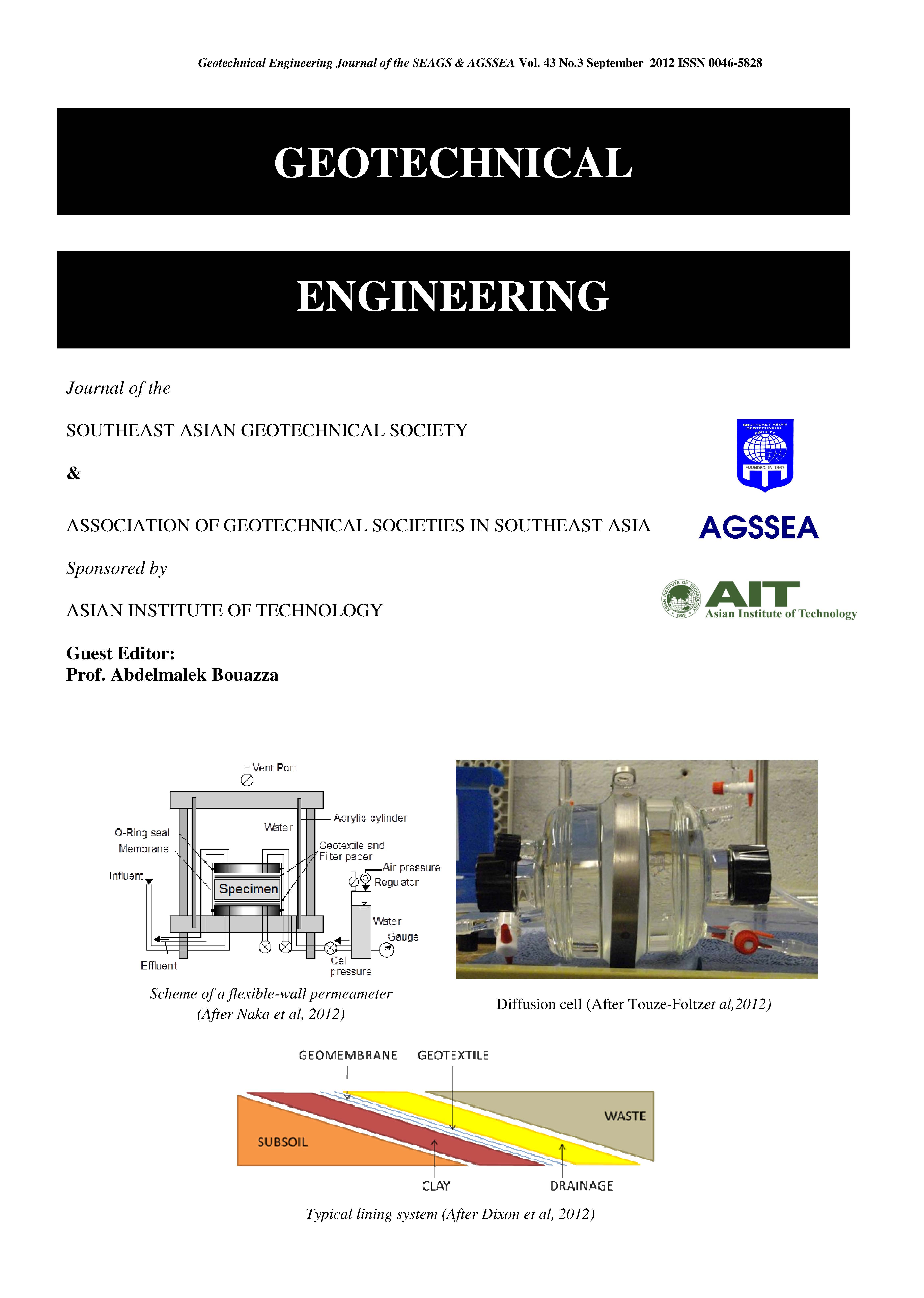Diffusion of phenolic compounds through an HDPE geomembrane
Main Article Content
Abstract
The experimental results obtained regarding diffusion through a high density polyethylene geomembrane of phenol, o-cresol, p-cresol, 2,4-xylenol, 3,4-xylenol, 2-chlorophenol, 4-chlorophenol, 2,4-dichlorophenol, 2,4,6-trichlorophenol, 2,3,4,6-tetrachlorophenol, 2,3,5,6-tetrachlorophenol, pentachlorophenol and bisphenol A are presented. Partitioning coefficients range from 0.3 to 205 respectively for phenol and pentachlorophenol. Diffusion coefficients lie in the range 1.1×10 -13 to 4.3×10 -13 m 2 /s respectively for 2-methylphenol and bisphenol A. The effect of aqueous solubility, n-octanol/water partitioning coefficient, molecular diameter and molecular weight on partitioning coefficient, diffusion coefficient and permeation coefficient were studied. Different trends from the ones previously given in the literature for volatile organic compounds (VOCs) were observed. An increase in the number of chlorine atom on the phenolic nucleus results in an increase of the partitioning coefficient and permeation coefficient, probably linked to the polarity of the molecules under study.
Article Details

This work is licensed under a Creative Commons Attribution-NonCommercial-NoDerivatives 4.0 International License.
Copyright © 2019 Association of Geotechnical Societies in Southeast Asia (AGSSEA) - Southeast Asian Geotechnical Society (SEAGS).


